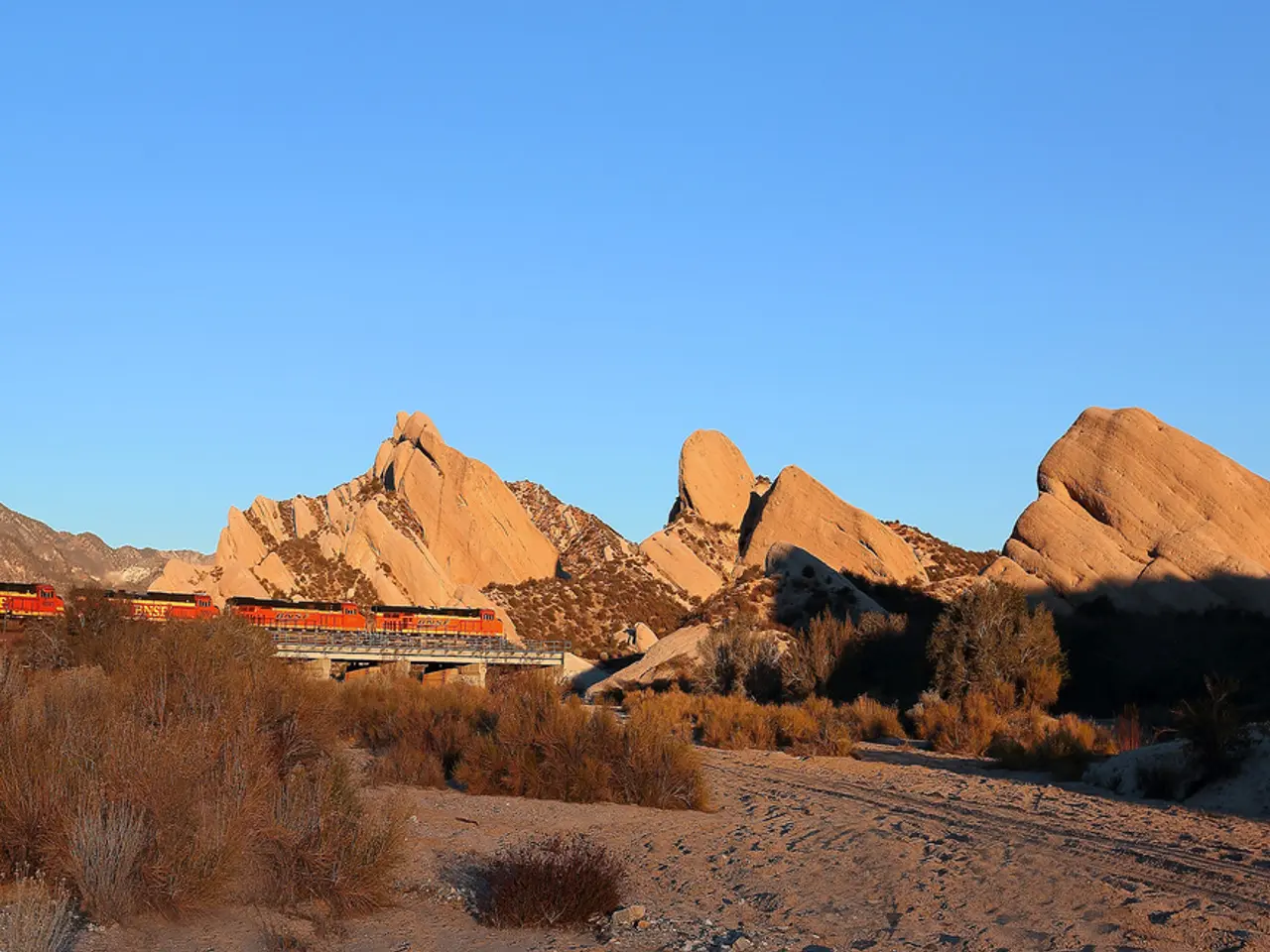Enhancing the Leeds-Liverpool Waterway
The towpath to Leeds, a part of the Aire Valley Towpath and Route 66, has undergone significant improvements, making it an accessible and safe route for various modes of travel, including walking, cycling, wheelchair use, pushchairs, and adapted cycles. This transformation has been made possible through the collaborative efforts of the Canal and River Trust and local authorities like Bradford Council.
The Leeds and Liverpool Canal, spanning 127 miles, is the second longest in the UK and passes through picturesque villages and traverses the Pennine countryside. Along its route, iconic attractions such as the Bingley Five Rise Locks and Saltaire, a UNESCO World Heritage Site, can be found.
The Bingley Five Rise Locks, Britain's steepest lock staircase, stands at a height of 18 metres, and the section of the towpath between Bingley Five Rise Locks and Bingley Three Rise Locks is currently being improved. The Canal and River Trust and Bradford Council have also collaborated to widen the path from Canal Road in Bingley to the Two Interconnecting Locks at Bingley Five Rise Locks.
The towpath between Otley Road Bridge in Shipley and Hirst Lock in Saltaire has also been improved and widened, and a 33-metre long mural on Otley Road Bridge in Shipley was designed and painted by students from Shipley College, featuring Titus Salt, Shipley Glen Tramway, and Five Rise Locks in Bingley.
The Leeds and Liverpool Canal is an integral part of the UK's inland waterway network and integrates with the National Cycle Network by providing towpaths used by cyclists and walkers. The canal towpaths attract millions of visitors annually for leisure and commuting, but there are ongoing concerns about user conflicts, such as speeding cyclists, electric scooters, motorbikes, and aggression between different types of users.
To address these issues, the Canal & River Trust is actively working on infrastructure adaptation, maintenance, and user management strategies to improve accessibility and resolve conflicts. Future plans focus on enforcement, investment in facilities, and inclusive stakeholder engagement to sustain the canal as a multifunctional asset.
The vision is to create a National Cycle Network that is accessible for everyone, and maintaining and improving towpath accessibility is a priority to support these active travel modes. Improvement proposals such as enforcing cycling permits and speed limits would enhance safety and accessibility for cyclists, ensuring the canal remains a valuable corridor for sustainable transport and recreation.
In 2023, the Leeds and Liverpool Canal Society celebrated the 250th anniversary of the first boats to carry goods on the canal, marking its rich history and significance in the UK's industrial past. The canal, once a transport line between Leeds and Liverpool, serving the textile mills of the industrial north, has now transformed into a key part of the UK's inland waterway network, offering a traffic-free route for walking, wheeling, and cycling.
The Leeds and Liverpool Canal, integrated with the National Cycle Network, provides a traffic-free outdoor-living space for walking, cycling, and wheelchair use, promoting a lifestyle that encourages active travel modes. The ambitious plans of the Canal & River Trust aim to widen home-and-garden spaces along the canal, fostering greater connection between the local communities and the waterway.




